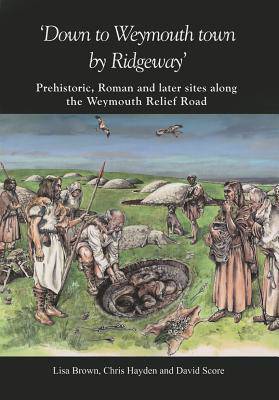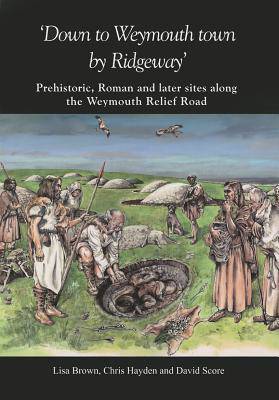
Je cadeautjes zeker op tijd in huis hebben voor de feestdagen? Kom langs in onze winkels en vind het perfecte geschenk!
- Afhalen na 1 uur in een winkel met voorraad
- Gratis thuislevering in België vanaf € 30
- Ruim aanbod met 7 miljoen producten
Je cadeautjes zeker op tijd in huis hebben voor de feestdagen? Kom langs in onze winkels en vind het perfecte geschenk!
- Afhalen na 1 uur in een winkel met voorraad
- Gratis thuislevering in België vanaf € 30
- Ruim aanbod met 7 miljoen producten
Zoeken
'Down to Weymouth Town by Ridgeway'
Prehistoric, Roman and Later Sites Along the Weymouth Relief Road
Lisa Brown, Chris Hayden, David Score
€ 40,95
+ 81 punten
Omschrijving
The Weymouth Relief Road crosses an area of intricately varied geology and one of the richest and most important cultural landscapes in England, which preserves a wealth of archaeological and historical remains. Extensive fieldwork in advance of construction of the Weymouth Relief Road yielded evidence of Neolithic, Bronze Age and Iron Age settlement and funerary activity, along with vestiges of Roman occupation.
The main sites were located at Ridgeway Hill, located on the edge of South Dorset Ridgeway, at the northern end of the scheme and at Southdown Ridge close to the southern end. At Ridgeway Hill a sequence of Neoltihic pits was investigated, along with several groups of early Bronze Age inhumation and cremation burials in pits and cists. The burials were probably originally associated with barrows that belonged to the Ridgeway Hill group, one of the densest concentrations of Bronze Age round barrows in Britain. At Southdown Ridge a settlement that spanned the late Bronze Age/early Iron Age to the late Iron Age was discovered lying adjacent to a cross-ridge dyke and prehistoric field enclosures. The inhabitants engaged in shale-working activity as well as agriculture until the settlement was abandoned and converted to a cemetery in which the dead were buried in the distinctive south Dorset tradition, accompanied by grave goods, and later in the Roman tradition of coffined burial.
The main sites were located at Ridgeway Hill, located on the edge of South Dorset Ridgeway, at the northern end of the scheme and at Southdown Ridge close to the southern end. At Ridgeway Hill a sequence of Neoltihic pits was investigated, along with several groups of early Bronze Age inhumation and cremation burials in pits and cists. The burials were probably originally associated with barrows that belonged to the Ridgeway Hill group, one of the densest concentrations of Bronze Age round barrows in Britain. At Southdown Ridge a settlement that spanned the late Bronze Age/early Iron Age to the late Iron Age was discovered lying adjacent to a cross-ridge dyke and prehistoric field enclosures. The inhabitants engaged in shale-working activity as well as agriculture until the settlement was abandoned and converted to a cemetery in which the dead were buried in the distinctive south Dorset tradition, accompanied by grave goods, and later in the Roman tradition of coffined burial.
Specificaties
Betrokkenen
- Auteur(s):
- Uitgeverij:
Inhoud
- Aantal bladzijden:
- 303
- Taal:
- Engels
- Reeks:
Eigenschappen
- Productcode (EAN):
- 9780900341595
- Verschijningsdatum:
- 24/03/2014
- Uitvoering:
- Paperback
- Formaat:
- Trade paperback (VS)
- Afmetingen:
- 208 mm x 295 mm
- Gewicht:
- 1224 g

Alleen bij Standaard Boekhandel
+ 81 punten op je klantenkaart van Standaard Boekhandel
Beoordelingen
We publiceren alleen reviews die voldoen aan de voorwaarden voor reviews. Bekijk onze voorwaarden voor reviews.









